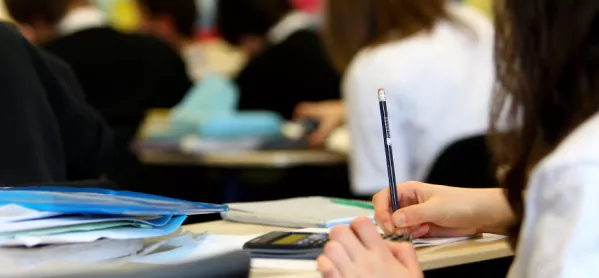One in three clever, poor boys fall behind at GCSE, research finds

Highly able pupils from poor homes are more than twice as likely to fall behind by the age of 16 than their wealthier classmates, new research from the Sutton Trust shows.
Of the pupils who were in the top 10 per cent for attainment at age 11, about 7,000 students fail to get into the top 25 per cent for their GCSE grades.
And the research, carried out by Education Datalab director Rebecca Allen, concludes that it is pupils on free school meals who fare particularly badly.
Out of the top-performing 11-year-olds, more than one in three of the disadvantaged boys will seriously underachieve at age 16, compared with one in six of those boys not eligible for free school meals.
The research concludes that bright, disadvantaged pupils will score four A grades and four B grades at GCSE on average, as their equally able classmates from better-off backgrounds earn eight straight As.
One in 10 of the disadvantaged but able pupils barely achieve C grades, lagging almost a whole GCSE grade per subject behind their more advantaged peers.
The report also expresses concern that students from disadvantaged homes are less likely to take GCSEs in history, geography, triple sciences or foreign languages. It echoes the findings of a previous report from the Sutton Trust, which concludes that bright but disadvantaged A-level students are less likely to take the “facilitating” subjects often required by the Russell Group universities, such as English literature, maths, sciences or languages.
Dr Allen said: “If you are a school receiving children who have got level 5 at key stage 2 and are eligible for free school meals, you have to be aware that these children are at risk of under-performing. You have to think hard about to what extent you need to direct these children at age 14 when they are going to make curriculum choices.
“You have to think about the things these children had at primary school that made them successful. There is a lot of institutional difference between primary and secondary. At primary they have a very close relationship with one teacher and that disappears at secondary school. It is easy for children to get lost and drift through if there is not a concerted effort to do something about it.’
The findings contrast with calls last year by the Fair Education Alliance, a coalition of organisations involved in education and child welfare, to redistribute pupil premium money away from high-achieving pupils from poor homes towards those who start school with low levels of attainment. The pupil premium is worth £1,320 per year for primary pupils and £935 for secondary pupils.
The Sutton Trust said that, since the demise of the gifted and talented programme, too many schools now lack provision for the highly able - the organisation has called for an effective national programme to be introduced.
It also recommends that all schools are made accountable for the progress of their most-able pupils, who should be given access to a broad, traditional curriculum.
Lee Elliot Major, chief executive of the Sutton Trust, said: “Today’s figures highlight the tragic waste of talent witnessed every year in our schools as so many bright pupils from disadvantaged backgrounds fail to fulfil their early academic potential. It is a scandal that over a third of boys from low-income homes who achieve so highly at the end of primary school are not among the highest school achievers at age 16.”
A Department for Education spokesperson said: “We are determined to ensure that every child, regardless of background is given an education that allows them to realise their potential. That is why our reforms place high expectations at the heart of our school system, with a rigorous new curriculum, world-class exams and a new accountability system that rewards those schools that push every child to achieve their best, rather than focusing on those at the C/D borderline.
“Alongside our £2.5 billion pupil premium, the result of these reforms is that the attainment gap between disadvantaged pupils and their peers is now narrowing at both primary and secondary level.”
Keep reading for just £1 per month
You've reached your limit of free articles this month. Subscribe for £1 per month for three months and get:
- Unlimited access to all Tes magazine content
- Exclusive subscriber-only stories
- Award-winning email newsletters



